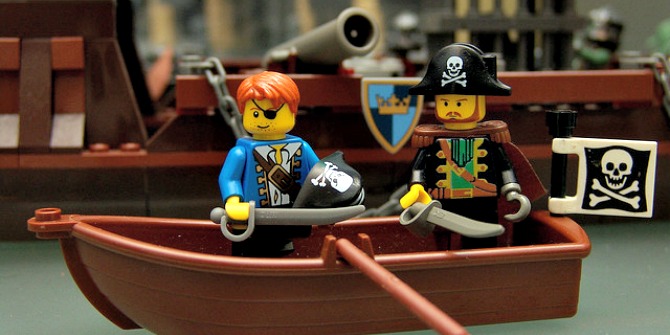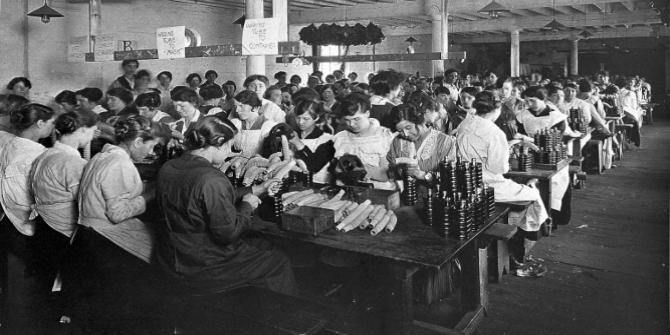British Pirates and Society 1680-1730 is a captivating and meticulously researched work of social history, which brings to life varied perspectives of the time, writes Marion Koob.
 British Pirates and Society 1680-1730. Margarette Lincoln. Ashgate. 2014.
British Pirates and Society 1680-1730. Margarette Lincoln. Ashgate. 2014.
In the period 1680-1730, almost 5,000 pirates roved the sea at any given time – marking what many scholars now name as the golden age of piracy. British Pirates and Society 1680-1730 is an excellent account of this period, in which Margarette Lincoln examines how pirates affected various segments of British society. The book provides an analysis of the place of buccaneers in commerce, the city, law-making, polite society and family life, as well as a chapter detailing how the island of Madagascar, a famed pirate haven, took hold of British imagination.
One of Lincoln’s principal findings is that attitudes towards buccaneers were ambivalent, at a cross between fascination and disgust. Even what was reckoned as piracy was debated. For instance, privateers (crews hired by states to pillage enemy ships during war-time) were legal in the eyes of their country of hire but branded as pirates by others. Throughout the study, Lincoln links piracy to international relations, naval law, as well as colonial and trading ambitions.
Today, piracy still claims a large place in our cultural psyche. We revisit it time and again in our fiction, from the continuing ‘Pirates of the Caribbean’ film franchise, to the TV series ‘Black Sails’, alongside numerous novels. British Pirates concludes with a thoughtful appraisal of how this interest is largely inherited from the debates of 1680-1730. It also discusses how this perception has also influenced our views about on-going piracy in Somalia.
Lincoln has wide-ranging experience in naval history, as she is the Director of Research and Collections at the National Maritime Museums. She has previously written Representing the Navy: British Sea Power, 1750-1815, and Naval Wives and Mistresses, 1745-1815.
Lincoln demonstrates that life for captured pirates in London’s prisons was harsh – and expensive. Chapter 2, “Punishing Miscreants: Pirates and the Metropolis”, vividly establishes how pirates and bystanders experienced prisons and punishment in London. The gaoler sought to profit from their commission by charging prisoners for any necessity, including food, candles, seeing a nurse if ill, and even for their release if acquitted. Those who couldn’t afford anything were left to die. Cells were overcrowded: Newgate prison held 300, twice the number it was designed for. As a result of these conditions, typhus was rife.
Lincoln narrates executions in heart-wrenching detail. Pirates were hanged on a dock near Wapping and to be under the jurisdiction of the Admiralty, the scaffolding had to stand below the tide mark. The condemned were driven through London on a cart containing their own coffin; hangings were done with a short rope, which meant a slow death by asphyxiation, as the fall would not be enough to break the neck. The body was then left to be washed over by the tide three times. Unless relatives could pay for a burial and grave, it was sold for dissection, or tarred and placed in a metal cage, to be hung on the banks of the Thames as a deterrent. The body of Captain Kidd, for instance, was left on Tilburry point for more than 20 years.
The chapter concludes with the argument that pirate executions emphasized the segregation of society, and were a jibe to those who had tried to improve their place in society and wealth through violence and illegality. There was a sharp contrast between the wealth the buccaneers once owned and the poverty many faced in prison. Spectators, Lincoln argues, were conflicted. Revealing an existing underdog culture, some thought the penalty too harsh because pirates mostly harmed well-off merchants and politicians.
The author uses an impressive variety of sources (including ballads and poems) with precision to work this aspect of day-to-day life into a fascinating and gruesome narration. The chapter considers how very different members of society interacted with and reflected on the punishment of buccaneers. Such a wide range of perspectives is rarely found in historical work.

Chapter 4, “A Growing Evil: Pirates and Commerce” centres on the interaction between merchants, pirates and the Crown. Piracy made trade risky and expensive, and over the years merchants lobbied for state protection. However, Lincoln shows that neither the navy nor merchants’ own defence methods were very effective.
During this period, it was conventional belief that trade made the country wealthier and people happier. As such, merchants successfully argued that it was the duty of the monarch to protect it. As a result, from the late 1690s, the state provided twenty-four ships manned by 3,500 seamen to hunt down pirates. They were overall unsuccessful, as pirate crews had much better knowledge of geography and hiding places.
Exporters spent large amounts towards arming ships themselves. Those going to Spanish America, for instance, took on extra men in Jamaica to man guns – although they demanded higher pay. On their side, the East India Company petitioned government for the right to capture pirates, as their attacks had damaged relations with Indian rulers, who conflated all British, pirates and merchants alike, as untrustworthy. However, once obtained, the company also used this prerogative to capture competitors – behaving in turn like buccaneers.
Lincoln points out that there was dissent about how commerce was conducted. Critics argued that merchants sought profit above humanity and national interest, and compared them unflatteringly with pirates. This was not helped by merchants eagerly investing in privateers.
Lincoln impresses upon the reader just at how large a scale British commerce operated, and the range of issues pirates provoked for both state and exporters. She adeptly points to merchants’ moral ambiguity and the paradox which allowed commerce to function with methods close to piracy but with the approval of the Crown.
British Pirates and Society 1680-1730 is a captivating and meticulously researched work of social history, which brings to life varied perspectives of the time. Perhaps its only weakness is Chapter 7, “Alternative Masculinity: Pirates and Family Life”, which would benefit from a more detailed account of how traditional gender roles were being challenged at the time. The inclusion of the theme, however, is decidedly original and opens the way for further research on the subject.
Lincoln’s argument for the relevance of her research is persuasive, as she shows the extent to which we have inherited our forbearers’ ambivalent mix of horror and enthrallment for piracy, both in current events and in the arts. The book is highly recommended to anyone at all interested in the subject. Margarette Lincoln is an outstanding stylist and this will be a gratifying read for specialists and non-specialists alike.
Marion Koob has a BSc in Government and Economics at the LSE and and MPhil in International Relations at the University of Cambridge. She has worked in Polis, the LSE’s journalism think-tank, and is now at the British Film Institute. Read more reviews by Marion.








1 Comments